Gifting has never been easier
Perfect if you're short on time or are unable to deliver your gift yourself. Enter your message and select when to send it.

Cart
Your cart is empty
As an interior designer with over three years of experience studying and researching in the fields of interior design, lighting, and house décor transformations, I have developed a keen interest in the allure of traditional interior design styles.
In my view, it creates a welcoming and cozy atmosphere that transcends everyday trends.
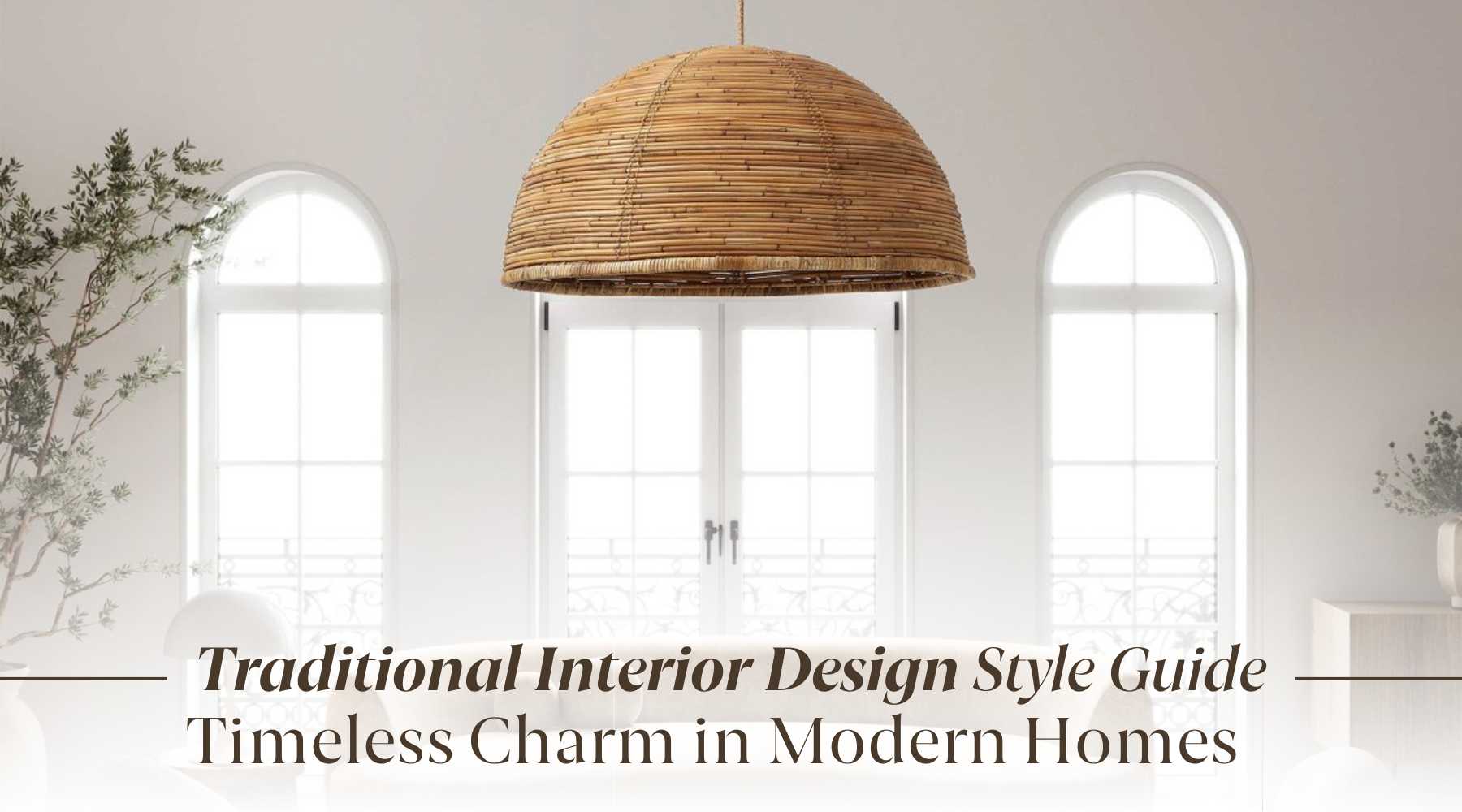
However, throughout my interactions with clients purchasing lights at Rowabi, I've noticed a lack of understanding regarding the style and its value. This article aims to delve deep into traditional interior design, exploring its cultural influences and aesthetic elements, and offering practical tips for incorporating it into modern homes.
Key highlights include:
From personal experience, I have observed that traditional interior style beautifully represents cultural heritage by showcasing time-honored décor elements. Strategic incorporation of ornate patterns, rich textures, antique furnishings, and classic furniture creates a welcoming, vintage-inspired aesthetic that keeps age-old traditions feeling fresh in modern households.
I always notice a common emphasis on heritage and craftsmanship shine through in traditional interiors. Spaces often display handcrafted artifacts—items passed down through generations that connect inhabitants to the past.
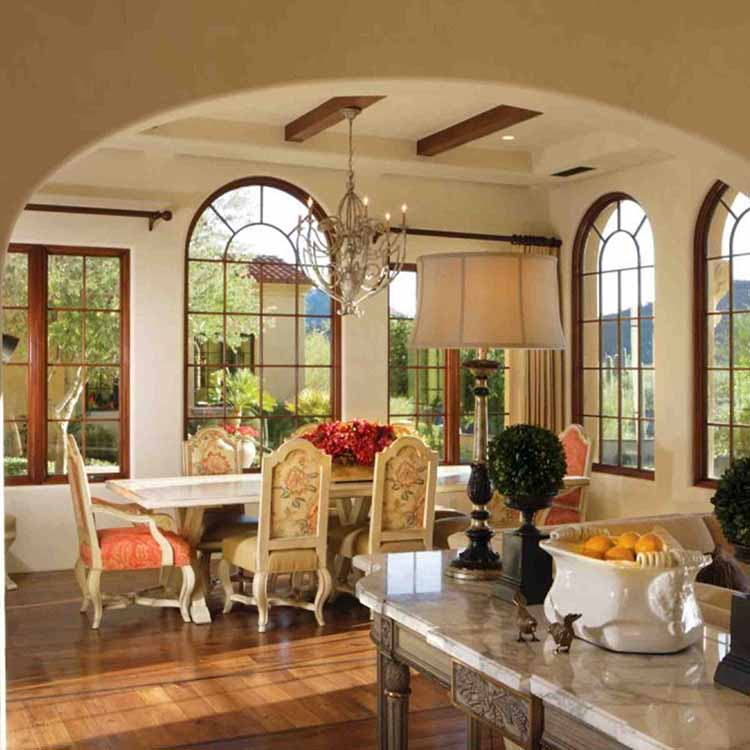
This is one of the styles that places great emphasis on details. Source: Janet Brooks Design [1]
Intricately embroidered tapestries from past eras, circular hand-woven baskets inherited from elders, timeworn leather-bound books stacked on wooden shelves, distressed floral oil paintings in antique frames — such decorative pieces showcase artisanal skill while transporting one to beloved places, people, and periods gone by.
Many people mistakenly confuse traditional interior design with classic design. However, as I mentioned above, traditional interior design styles typically involve rich textures, ornate furnishings, and intricate details inspired by historical periods, which create a warm and familiar ambiance. In contrast, classic interior design emphasizes simplicity, elegance, and balance, favoring a more restrained approach to ornamentation and decoration.
Several variants of traditional style exist, each drawing from distinct cultural influences. In the following section, I will analyze some of the most popular forms.
Of all the traditional interior design variants I have worked with, English traditional remains a favorite for its ability to emit sophisticated subtlety through strategic decor choices.
English traditional interiors thoughtfully combine stately wooden furnishings passed down ancestral lines — think ornately carved mahogany dining sets, silver-adorned tea trolleys, and upholstered armchairs recovered in British heritage brands. Sepia-toned pastoral oil paintings, vases of English roses or peonies, and collections of fine porcelain crockery and cutlery also frequently appear on display shelves.
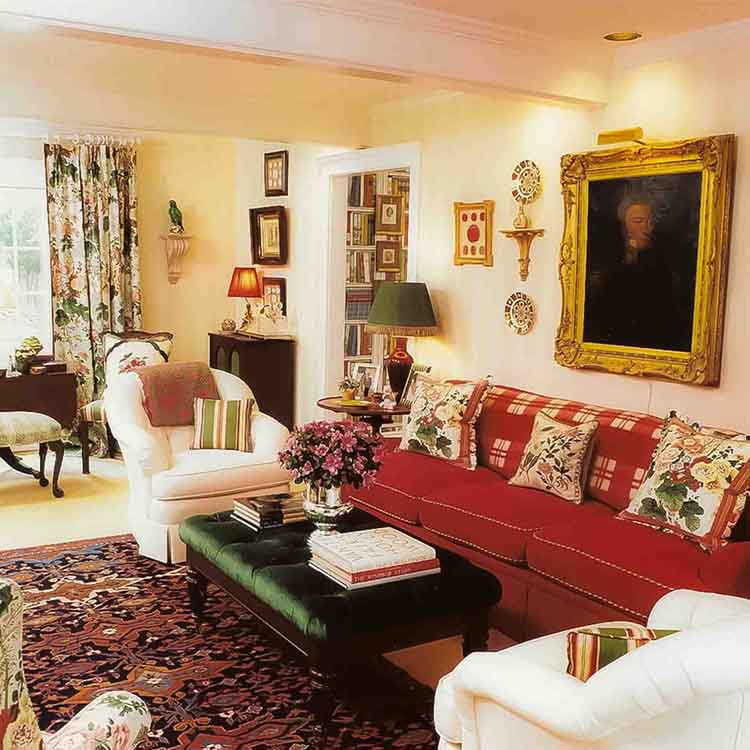
The English Traditional Style incorporates warm neutrals and rich tones like burgundy, green, and navy blue. Source: Worktops [2]
The chambers almost always spotlight commanding stone fireplaces, often richly carved from materials like Italian marble, Portland freestone, or campagna. For me, these grand hearths act as focal points where inhabitants and guests convene for warmth and communal connection.
Overall, English traditional décor stimulates refined sensibilities through time-treasured artifacts.
Drawing ornate inspiration from exquisite Baroque and Rococo movements, French traditional interiors use indulgent finishes, furnishings, and lighting for an atmosphere of regality.
I often observe liberal applications of gilt accents enhancing arched doorways, baroque-style console tables, accent mirrors, and branching candle stands. Elegant seating abounds in Louis XV chairs upholstered in silks, velvets, or brocades, accompanied by matching fainting couches for leisurely lounging. Statement lighting fixtures like crystal chandeliers, gilded wall sconces, and candelabras sculpt an ambient glow.
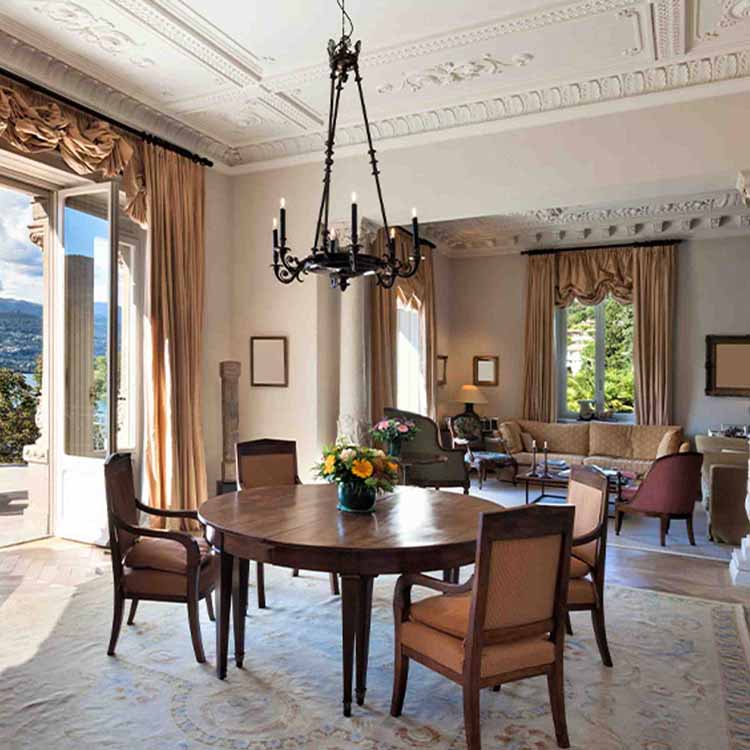
French furniture style predominantly features wood craftsmanship and authentic fabric choices. Source: Design Cafe [3]
Classically inspired layouts maintain symmetry and evenly spaced arrangements anchored by a focal point like an ornate fireplace mantle or large landscape piece. As one of the prime exemplifications of French architectural heritage, the Palace of Versailles and its Hall of Mirrors remain an ongoing source of inspiration for glamorous interior palettes from centuries on.
With earthy terracotta tiles cooling feet against the Mediterranean heat, exposed wood beamed ceilings evoking vineyard cottages, and textural warmth from wrought iron furnishings, Tuscan traditional interiors transport city inhabitants to pastoral countryside and along cobbled village roads for sensory respite.
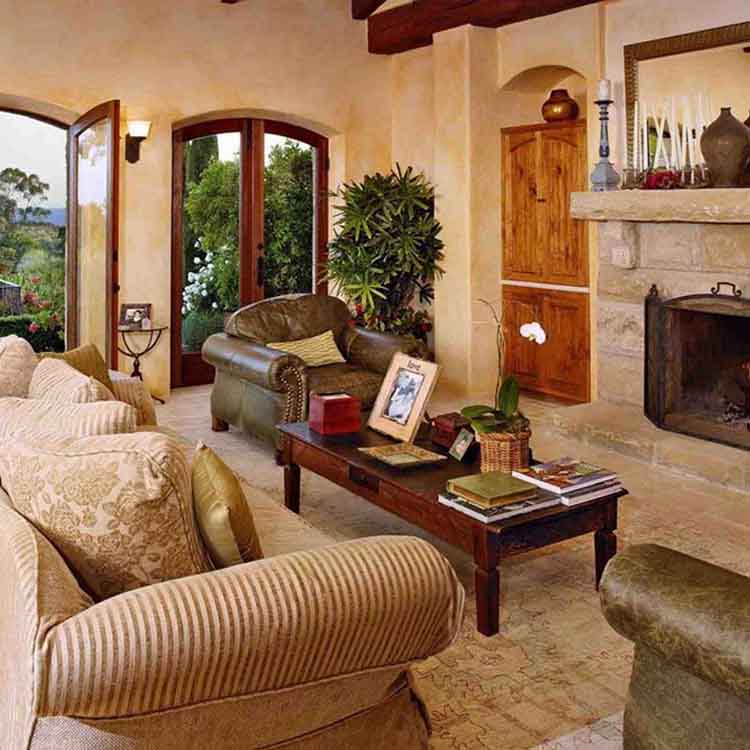
Tuscan home design combines simplicity with strategic use of plaster, wrought iron, recycled wood, and space. Source: Yahoo News [4]
Vibrant textiles add folkloric flavor in the form of geometrically embroidered linen throws made locally by artisans, multicolored spool tables reflecting vibrant markets, and tropical-inspired botanical tapestries fitting the sunny clime. Instead of ornate baroque, we find raw, unfinished wooden tables, roughly hewn benches, and ceramic pieces crafted more for creative expression than refinement.
As interior design preferences shift across new generations, traditional motifs risk appearing outdated or stuffy without periodic revitalization. Modern traditional style answers today's needs for comfort and practicality while retaining vintage sophistication through strategic contemporary updates.

This is one of the recent trends pursued with elegant blending. Source: Meadowbank Design [5]
Color palettes also reflect adaptive reinvention; instead of only warm earth tones, we now observe lighter finishes with crisp white, light oak, or walnut tones contrasted by matte black metals and muted greys. Sophisticated restraint outweighs ornamental excess.
While acknowledging the past through integrated heritage elements, this contemporary permutation suits fast-paced urban lifestyles and ever-evolving taste profiles without compromising timeless quality over fleeting trends. From penthouse bachelor lofts to suburban family homes, modern traditional style bridges eras through purposeful balance.
A warm, welcoming atmosphere is integral to traditional home decor. The strategic use of color palettes and tactile elements helps create this ambiance.
In my experience, traditional interiors leverage warm neutrals like beige, brown, terracotta, and pops of red, blue, and golden yellow to emit coziness. Unlike stark, cool palettes, these friendly tones instantly ease the inhabitants. Strategically placed accent walls in deeper shades add dimension while contributing to the traditional aesthetic.
Tactile components also influence the enveloping atmosphere in traditional dwellings. I observe the liberal use of ornately carved wood, nubby linen, distressed leather, and intricately woven rugs. These add a layered, sensory effect while highlighting artisan craftsmanship. Floral tapestries and framed botanical sketches further augment the welcoming ambiance.
After several years of work and contributing to building this style for a few clients, I've drawn some helpful advice for you to consider.
I find traditional homes dotted with precious artifacts - items passed down generations that showcase cultural narratives. China inherited black and white family portraits, antique silverware, and hand-bound books from elders, which hold sentimental value while reflecting the enduring charm of heritage decor.
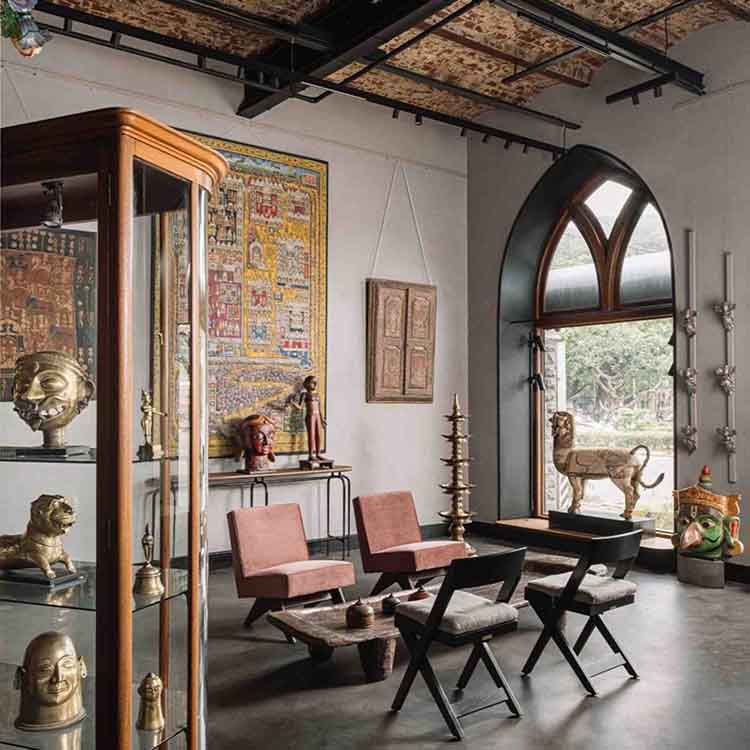
Ensure the featured items relate aesthetically for visual interest. Source: Conde Nast Traveler [6]
Strategically placed glass-fronted cabinets and display shelves highlight such pieces. I suggest curating vignettes on side tables or mantles for a coordinated, collected look. I also recommend aiming for an aged appearance by opting for patinated mirrors, gently worn furnishings, and sepia-toned artwork.
Seeking and displaying antique furnishings introduces authentic charm to living spaces. From ornately carved chairs to marble-topped console tables, I love how these vintage finds transport inhabitants to bygone eras through their nostalgic aesthetic. When scouring flea markets for treasures, I suggest scrutinizing pieces for stable structures without compromising antique integrity through over-restoration.

Antique items tell more stories, adding depth to your home's palette. Source: Dallas Designer Furniture [7]
Metal industrial lights suspended above an antique dining set or a Chesterfield leather sofa against exposed brick — such vignettes merge old and new seamlessly. I find this interplay keeps the traditional motif feeling fresh rather than dated.
Elaborate iconography defines traditional adornments. Intricate fretwork, scrolled metalwork, coronas, crests, and acanthus leaves — such embellished motifs grace furnishing and architecture. However, an excess of ornamentation can overwhelm inhabitants. I suggest aiming for strategic balance.
For ornamental rugs, I recommend placement beneath seating areas or beds rather than entire rooms. Accent walls with chinoiserie or damask prints make better style statements than floor-to-ceiling applications.
I also advise clustering framed botanical sketches rather than scattering solitary pieces randomly. Finally, limit accents to key furniture such as canopy beds or cabinetry to let their artistry shine. Achieving compositional harmony allows ornamental detailing to elevate rather than dominate overall aesthetics.
While some view traditional style as outdated or stuffy, I believe certain elements transplant beautifully into modern dwellings. Tactical incorporation of heritage furnishings, artwork, or layouts lends character without compromising contemporary design.
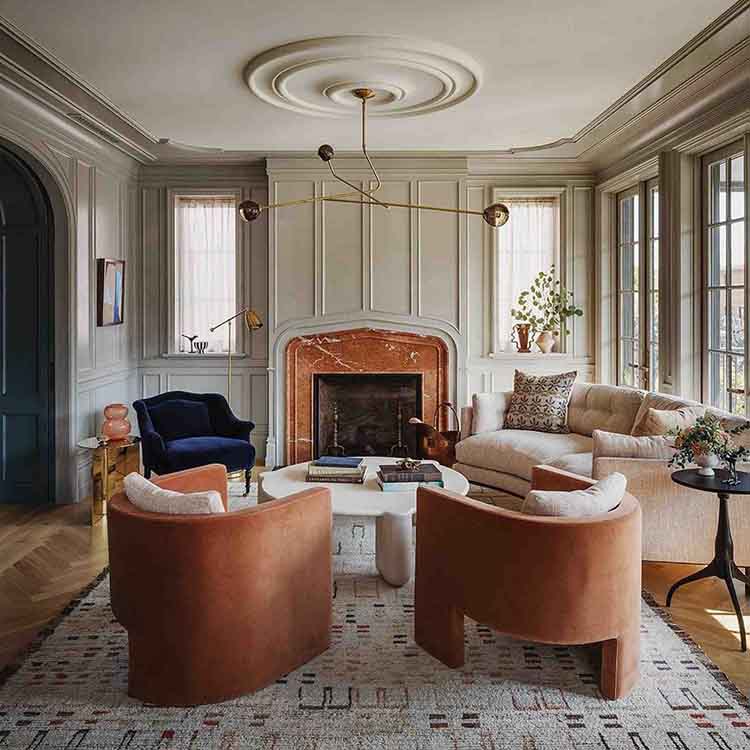
A modern yet vintage charm will create a unique focal point for your home compared to others. Source: Scout & Nimble Blog [8]
Furthermore, I have noticed a rising appreciation for craftsmanship and ornamentation amongst millennials, signaling an exciting revival of vintage style.
I suggest introducing traditional touches tailored to specific spaces. Ornate mirror frames and gold chandeliers suit elegant dining rooms; a clawfoot tub updates modern bathrooms with Victorian charm.
Try a leather Chesterfield living suite or tufted reading chair surrounded by bookshelves in lounging spaces. Such a personalized infusion of antique artifacts allows this timeless trend to thrive in the present.
What defines traditional interior style?
How do you incorporate classic furniture into traditional decor?
What color palette suits traditional interiors?
Are there specific patterns associated with traditional design?
Tips for creating a cozy atmosphere in a traditional home?
Is cultural heritage important in traditional interior styling?
Where can I find antique furnishings for traditional homes?
How do you use rich textures effectively in traditional decor?
What are the key elements of timeless design in interiors?
Tips for showcasing handcrafted artifacts in home decor?
In closing, traditional interior design connects modern inhabitants to cultural legacies by displaying heritage artifacts. The tactical application of vintage furnishings and layouts lends age-old sophistication without compromising contemporary practicality.
As styles fluctuate with each passing era, this enduring aesthetic retains its welcoming allure across generations. This guide has sparked inspiration to embrace timeless charm within your own spaces.
Source:
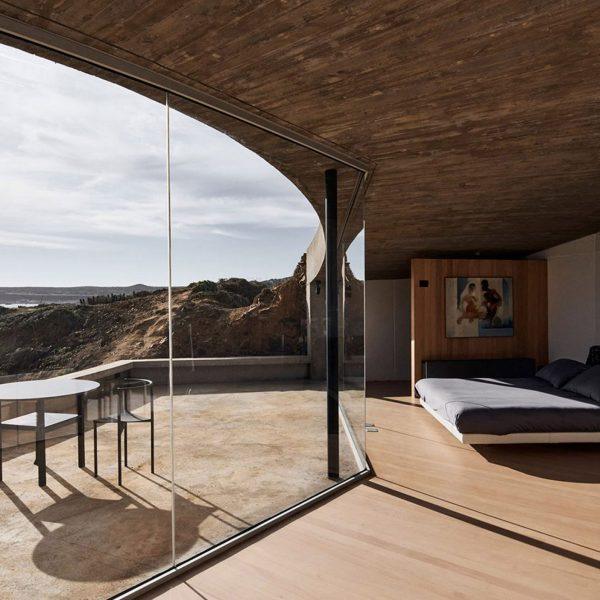
Minimalist Interior Design | Ideas And How To Make It Work
Minimalist interior design offers a fail-safe method to create a cozy and refined home that is not only a worthwhile investment but also immune to passing fads. However, understanding the true esse...
Read more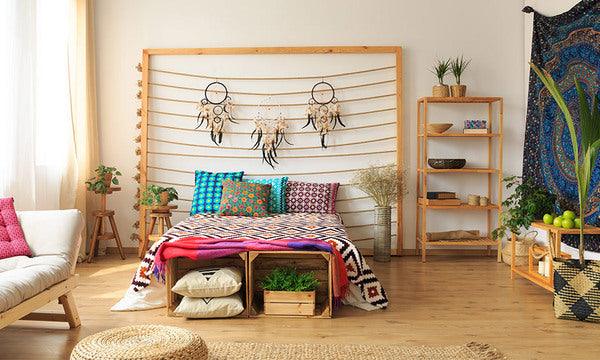
Bohemian Interior Design: 10 Décor Ideas To Warm Up Your Space
Are you craving that Bohemian vibe in your home? Look no further! Dive into our guide on Bohemian style home décor ideas and discover how to infuse your living space with warmth and individuality. ...
Read moreGifting has never been easier
Perfect if you're short on time or are unable to deliver your gift yourself. Enter your message and select when to send it.
